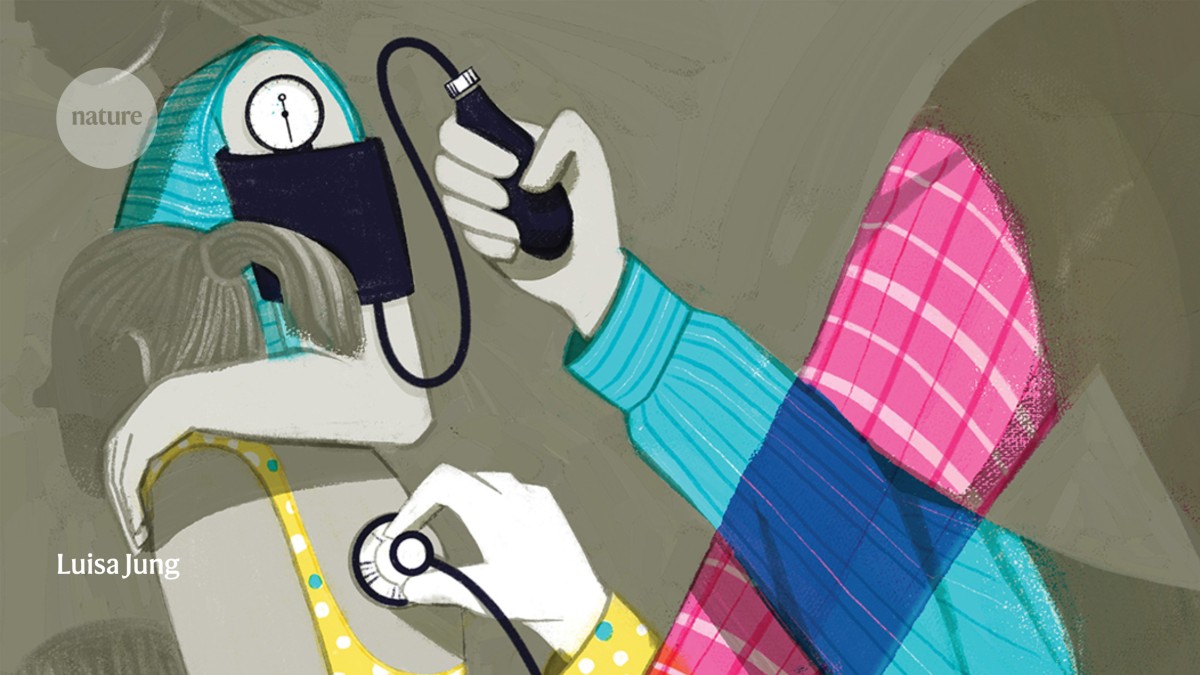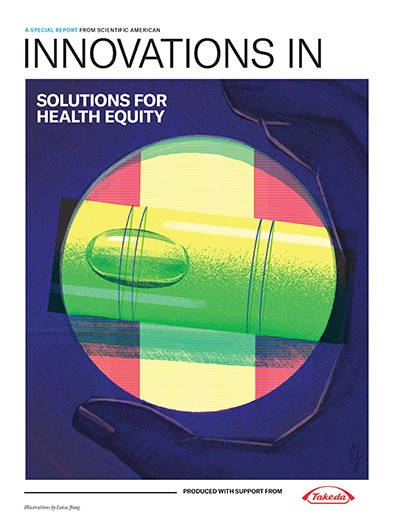California’s Inland Empire is a broad swath of land east of Los Angeles, about five times the size of Connecticut, stretching through desert and surrounded by mountains. It’s one of the state’s fastest-growing regions, but it’s underresourced, with incomes and education levels lower than the state average. It is also medically underserved, with too few primary care physicians and specialists to adequately tend to the area’s increasing population. In the region’s many Spanish-speaking communities, finding a doctor who speaks the same language is difficult. And whether people can communicate well with their health-care providers affects patient outcomes.
Three years ago the Inland Empire Free Clinic opened in Colton, Calif., to provide free health and medical care and social services. Its clinic is staffed by physicians and medical students from the nearby California University of Science and Medicine. Many are proficient in Spanish, and those who aren’t work through interpreters. “The moment I talk in Spanish to patients, they change their attitude and are more open to tell me how they actually feel,” says Alexandra Lopez Vera, director of C.U.S.M.’s medical Spanish program, who coordinates interpreters for the clinic. “If I talk to a Latina who comes to see a doctor because they have a problem related to the reproductive system, they may feel like, ‘I feel embarrassed to tell this white guy who doesn’t speak my language about this situation that I’m having.’ They request for me to be with them.”
Research has shown that in the U.S., patients with limited English proficiency have a higher risk of hospital readmission and greater difficulty adhering to medication regimens. More than 25 million people who live in the U.S. have limited English proficiency. Because the majority of those are Spanish speakers, many medical schools now offer medical Spanish. C.U.S.M., which was founded in 2018, has made it mandatory. Finding a common language is just one way in which medical schools, clinics, hospitals and health-care networks are working to address health disparities as part of an increasingly visible movement known as culturally sensitive or concordant care.
When patients don’t trust the providers caring for them or when they feel dismissed or misunderstood, they’re less likely to share relevant information. And when providers don’t understand a patient’s life experiences and culture or don’t speak their language, they may be less likely to ask relevant questions. Culturally sensitive care starts with the premise that people come from diverse cultural, ethnic, religious and socioeconomic backgrounds and that understanding these differences is crucial for proper health care. Hospitals and medical schools are now adding tools to help their providers improve sensitivity around language, traditions and cultural expectations. The strategy is already advancing health equity. A growing body of research shows that by addressing bias and stigma directly in a rapidly diversifying patient population, culturally concordant care results in better health outcomes across a person’s lifespan—from prenatal and maternal health to pediatrics to end-of-life decisions.
Innovations In Solutions For Health Equity
Maternal mortality rates in the U.S. are higher than in any other high-income nation in the world. In 2022 that rate was about 22 deaths per 100,000 live births, according to the Centers for Disease Control and Prevention’s National Center for Health Statistics, down from almost 33 deaths per 100,000 live births in 2021.
The death rates are the worst in Black communities. Data from the Chicago Department of Public Health revealed that in 2019, Black women in Chicago were almost six times more likely than white women to die during pregnancy or within one year of giving birth. To try to reduce this number, the University of Illinois Hospital and Health Sciences System (UI Health) introduced a new initiative in 2022: its Melanated Group Midwifery Care program.
The midwifery group was born out of Karie Stewart’s frustration with a system that was failing Black and brown families. “The Black population is experiencing the most deadly outcomes when it comes to pregnancy,” says Stewart, a certified nurse-midwife at UI Health and one of the investigators leading the Melanated Group Midwifery Care program’s research. The patients she serves are predominantly Black and live on the west and south sides of Chicago, where a number of hospitals shut down their labor and delivery units during the worst of the COVID pandemic. “There is a lack of care for those already disadvantaged,” she says. Stewart approached Kylea Laina Liese and Stacie Geller of the University of Illinois Chicago, who study risk factors associated with maternal health, and together they made a plan, secured a $7.1-million research grant and got to work.
The research project includes people at all stages of pregnancy, from the first trimester to 12 months after birth. It matches Black pregnant people with Black midwives and is expanding prenatal care in communities with limited maternal health services. The program provides group education to support people in different stages of pregnancy, offers breastfeeding resources, helps participants with family planning after their babies are born, and ultimately reframes maternal and postpartum care in a way that respects Black patients’ needs and experiences in a health-care system still recovering from historical and systemic racism.
Today Stewart and her team are four years into the five-year grant, and they can point to qualitative changes in the community they serve. (The team expects to share quantitative data after the research period ends in 2025.) “We’re seeing folks use the health-care system more. They’re not running from it,” Stewart says. “They’re empowered from their maternity experience. They’re empowered to share what’s going on.” Given that many of these patients had previously avoided the health-care system, she sees this as a big win. “We want them to be engaged in their health care not just when they’re pregnant but after having a child and to seek care for anything else they have going on.”
In medical schools across the country, clinicians, faculty, administrators and students are reviewing their curricula to identify existing biases and teach cultural sensitivity to the next generation of physicians. When schools integrated information on racial disparities into their teachings, according to a 2019 study in Academic Medicine, students were more motivated to work in diverse communities.
In 2021 Temple University’s Lewis Katz School of Medicine in Philadelphia formed a task force of students and faculty to identify potential problems in the school’s course curricula, says Abiona Berkeley, an anesthesiologist and interim associate dean of the school’s diversity, equity and inclusion office. There were 346 instances in the curriculum, she says, “where we had an opportunity for development and growth.” These included dozens of examples of racial or ethnic stereotypes, as well as symptoms that had never been studied in groups representing a range of human skin tones. Berkeley says several members of the faculty have told her, “It’s changed the way I look at some of my patients and how I engage with them.”
Hillel Maresky, a cardiothoracic radiologist, arrived at Temple University in 2019, before the cultural sensitivity task force was assembled. He soon noticed an odd phenomenon. Many of his Black female patients had chest x-rays, computed tomography scans and magnetic resonance imaging (MRI) that seemed to include shadows or squiggly lines known as artifacts. He discovered that these artifacts were being caused by the women’s hair braids, locs and twists and the hair bands that held them in place. Certain hair oils and conditioners used by Black women also presented problems: the oils occasionally contain trace amounts of metals that interfere with MRI machines’ powerful magnets. “As I was compiling these cases, I learned that there really was a hole in the medical literature on this topic,” Maresky says.
When images are unclear or contain artifacts, patients must be scanned again. And additional testing means additional radiation exposure, as well as logistical challenges such as transportation or loss of hours at work. The lack of familiarity with these hairstyles and the lack of data regarding their effect on imaging present problems not only for radiologists but for clinicians in a wide range of medical fields.
Maresky began collecting a dataset that now includes more than 100 images of such artifacts that mirrored disease, and Angela Udongwo, a fourth-year medical student in his laboratory, has now presented their findings at a couple of conferences and to other medical schools in the Philadelphia area. They have also completed a pilot study on physicians’ awareness of and familiarity with Black hairstyles. “We found the length of your career correlated with how familiar and comfortable you are with identifying these hairstyles in imaging,” Udongwo says. But these are skills that can be taught. “There is no curriculum developed around teaching this.”
Udongwo is Nigerian American and has worn braids for years. While collecting research for the project, she heard one story after another about patients who encountered radiologists with little cultural sensitivity or understanding. It just doesn’t make sense, she says, that radiologists in 2024 aren’t familiar with these hairstyles.
Medical schools are beginning to catch up. In 1991–1992, researchers surveyed all 126 medical schools in the U.S. about whether they had implemented cultural-sensitivity training or had plans to do so in the future. Their results were published in 1994 in Academic Medicine. Of the 98 schools that responded, only 13 provided a cultural-sensitivity course, and only one of those was a requirement. Today medical schools, governments and hospitals across the U.S. have guidelines for cultural-sensitivity training. They’re expanding their sensitivity around communication, too: as of 2019, almost 80 percent of the nation’s medical schools offered medical Spanish.
Not only does language concordance improve outcomes, but it can also enhance patients’ experiences. A small study by Lopez Vera assessed patient satisfaction at the Spanish-friendly Inland Empire Free Clinic and found that those treated by a doctor who spoke their language had the highest satisfaction scores. These days, between technology and artificial intelligence, some people assume they don’t need to learn a new language, Lopez Vera says. But the evidence shows that the human-to-human approach is not just more empathetic but more effective.



